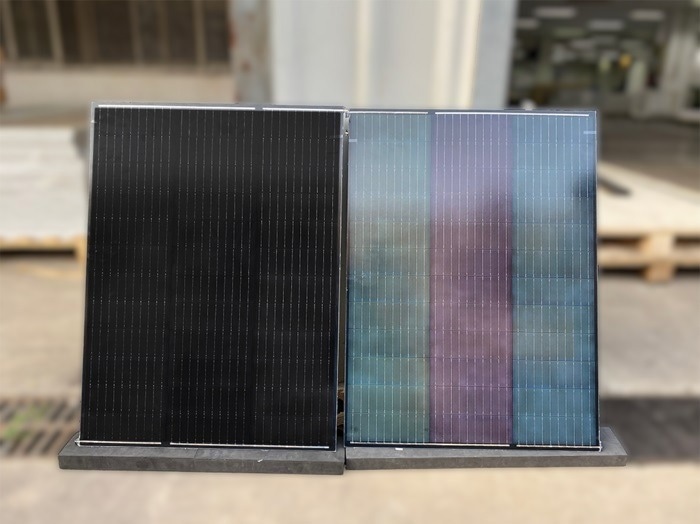Solar panels are not just for rooftops; some buildings have these energy-generating devices covering every inch of their exterior. However, as more structures and public areas use solar technology, observers may not be impressed by their uniform dark appearance.
 Photonic glasses give solar panels pleasing colors while maintaining their ability to efficiently produce energy. Image Credit: Adapted from ACS Nano 2022.
Photonic glasses give solar panels pleasing colors while maintaining their ability to efficiently produce energy. Image Credit: Adapted from ACS Nano 2022.
Scientists recently developed solar panels that produce energy nearly as efficiently as conventional ones while taking on colorful hues. The research was published in the journal ACS Nano.
A red car appears red because the finish reflects red light rather than absorbing it, whereas solar panels are often a deep black hue because their role is to absorb light. Therefore, most attempts to give these devices color will result in a reduction in their capacity to generate power and absorb light.
The scales on butterfly wings are a good example of structural sources of color that use minuscule geometries to only reflect a very narrow, selective fraction of light. However, earlier attempts for structural color incorporation either gave panels an unfavorable iridescence or were prohibitively expensive to use on a broad scale. Therefore, the study authors sought to create a method of coloring solar panels that would keep their ability to produce energy effectively while being simple to apply and economical to do so.
The group applied solar cell surfaces with a fine mist of a substance known as photonic glass. A thin, disorganized layer of dielectric microscopic zinc sulfide spheres formed the glass.
The photonic glass allowed most light to flow through, but depending on the size of the spheres, some colors were reflected. By employing this technique, the researchers managed to produce solar panels with blue, green, and purple hues while only reducing power generation efficiency from 22.6% to 21.5%.
Additionally, they discovered that the fabrication could be scaled up and that solar panels made with this photonic glass layer maintained their appearance and functionality under conventional durability testing. The researchers want to investigate techniques to produce a larger range of hues as well as strategies to make the colors more saturated.
The National Natural Science Foundation of China provided funding for the research.
Journal Reference:
Li, Z., et al. (2022) High-Efficiency, Mass-Producible, and Colored Solar Photovoltaics Enabled by Self-Assembled Photonic Glass. ACS Nano. doi.org/10.1021/acsnano.2c05840.